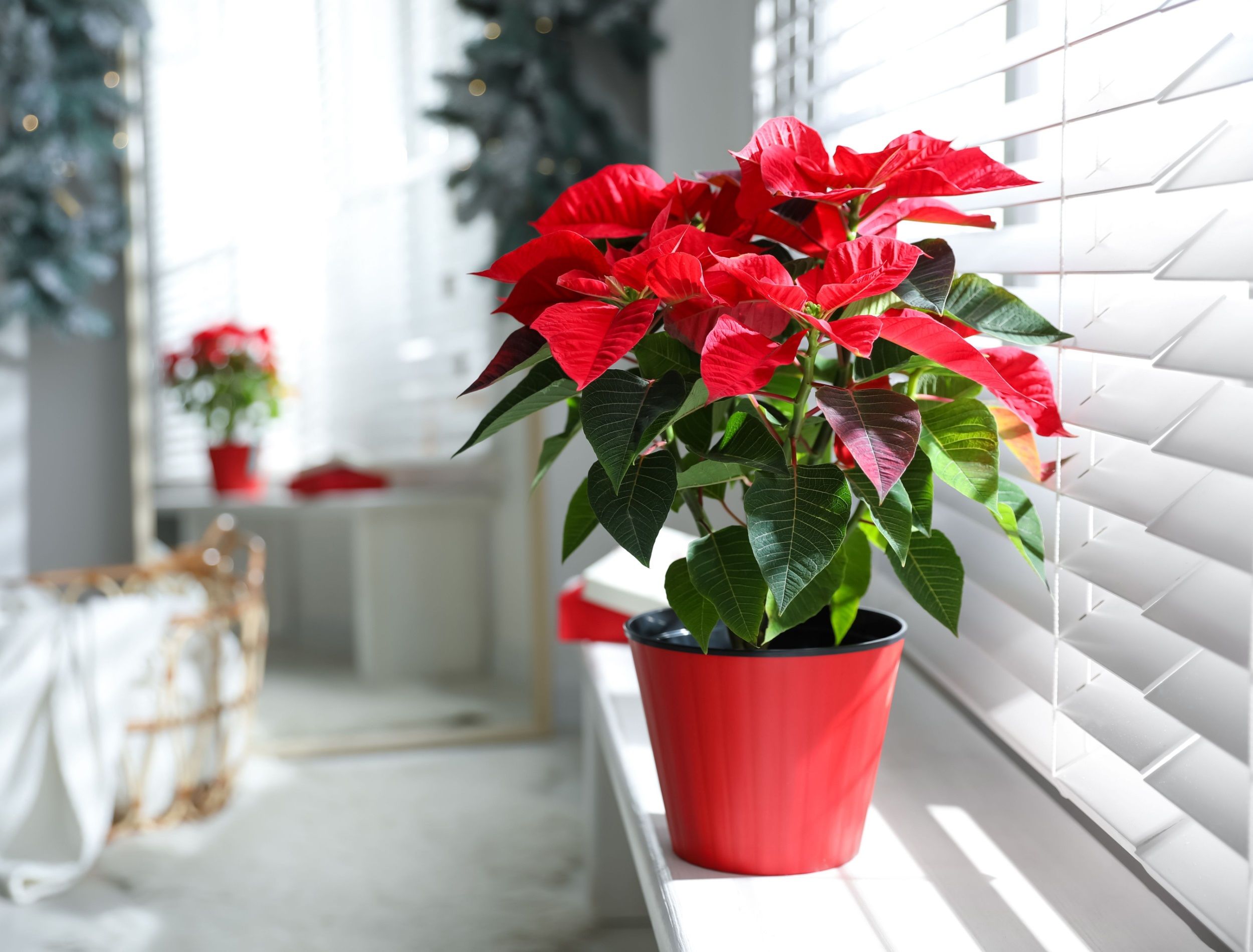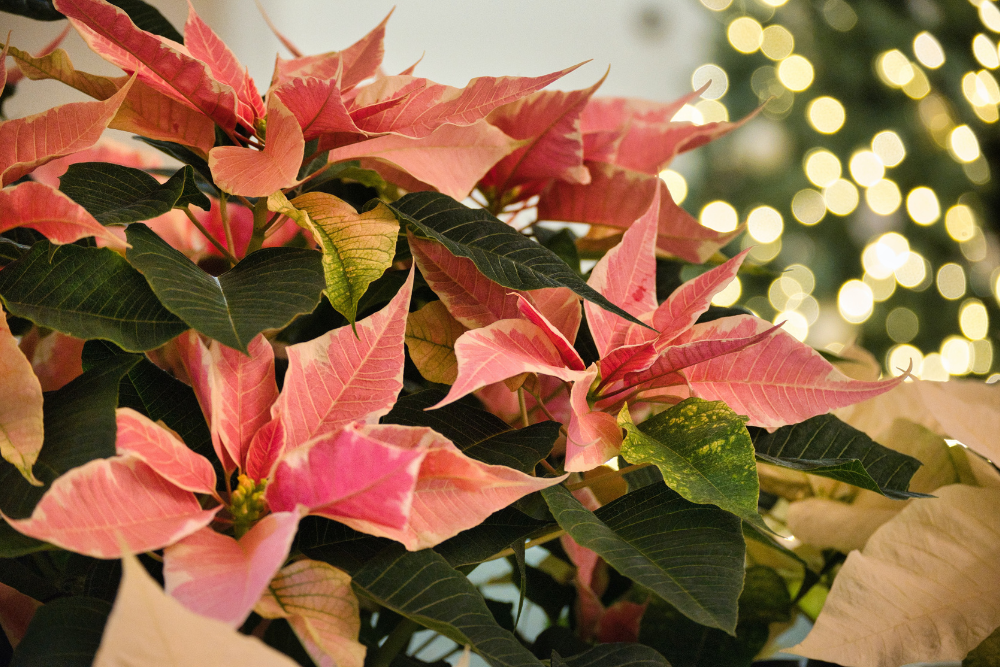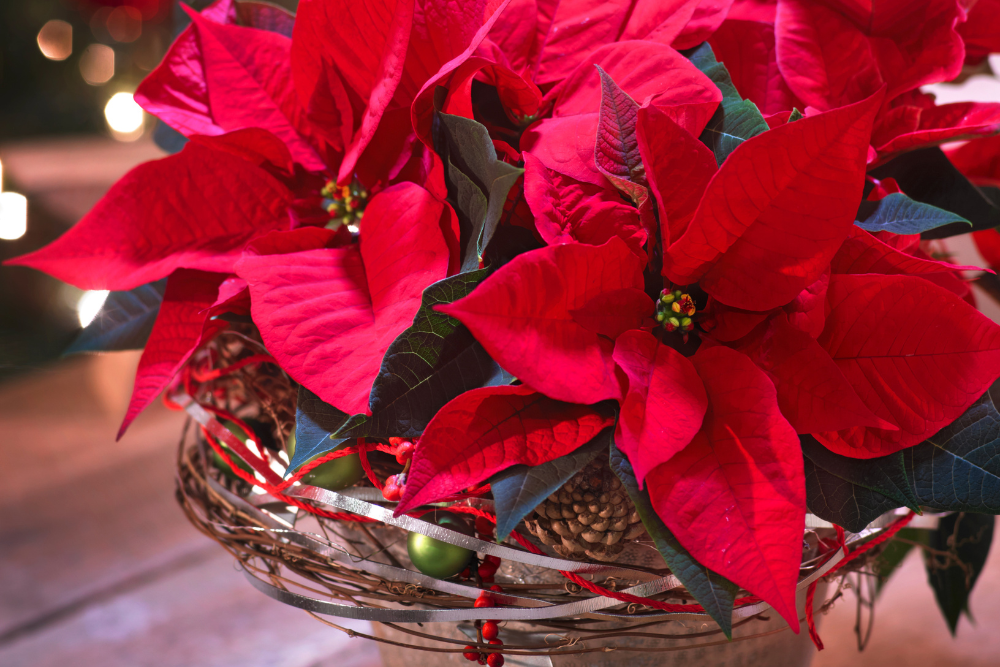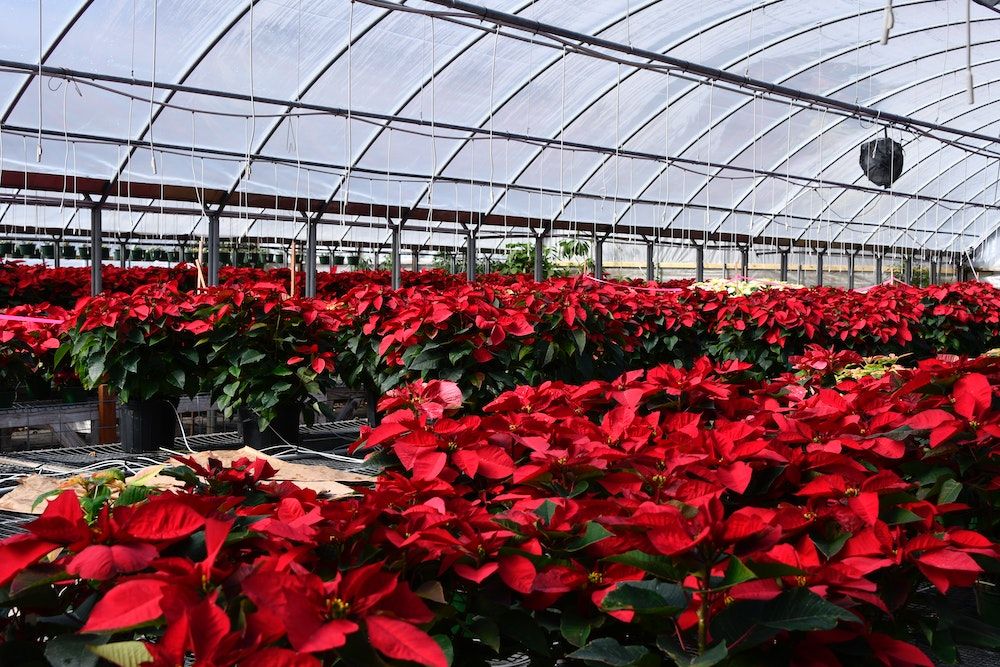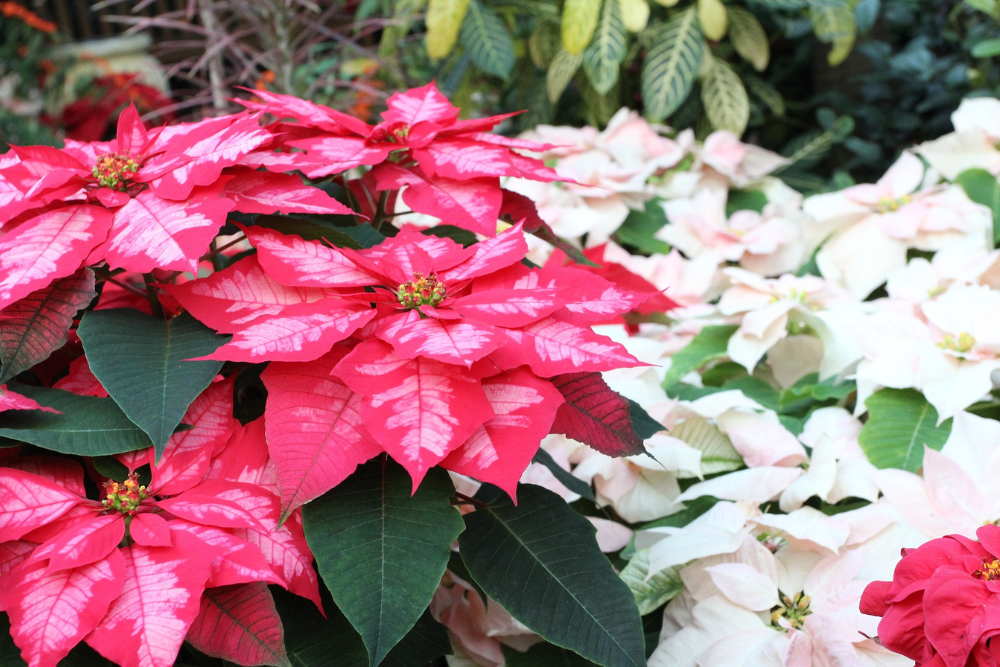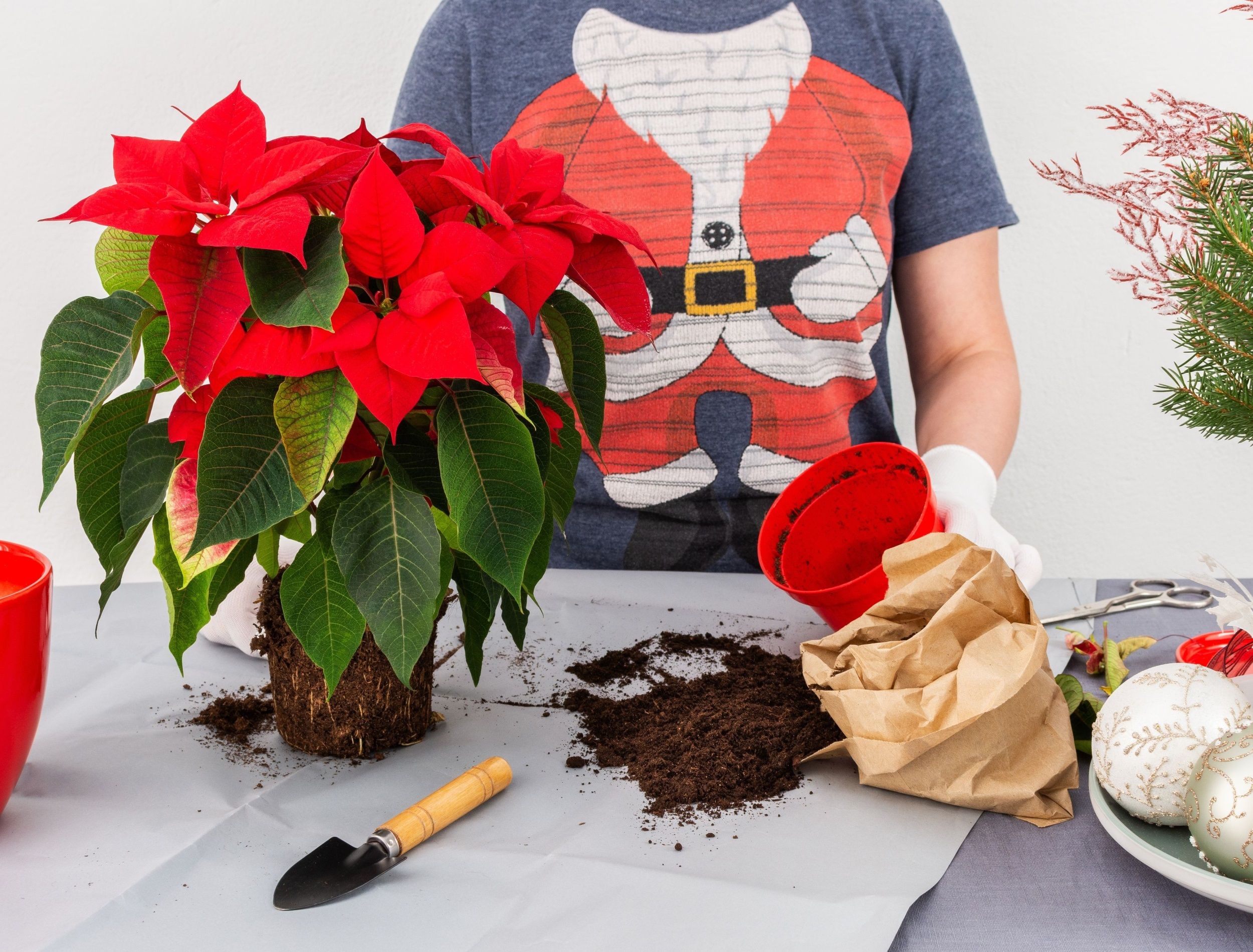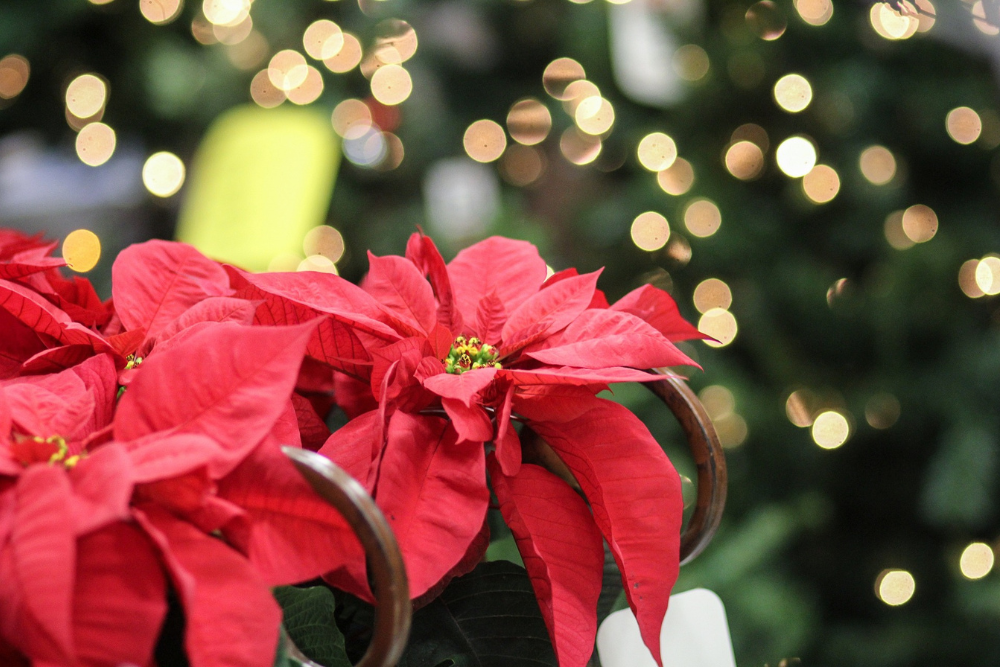Someone's gifted you a poinsettia, or maybe you saw the flower at your local garden and thought it would make an excellent addition to your collection. But you've heard it's a difficult plant, and you're worried about what you might do wrong. Well, fear not! The poinsettia is just like any other plant, but with a few extra steps.
Whether you're a novice or an expert, overcoming a plant like this is a win. Plus, the rewards when you succeed will add a little Christmas charm to your home! So, when you're caring for your Poinsettia here are five mistakes to avoid so you can keep your new addition on the right track!
What's So Special About This Flower?
Image credit: Ron Dauphin via Pixabay
The poinsettia (Euphorbia pulcherrima) is a seasonal flowering plant with a cyclical blooming season that starts after fall. It is sometimes called the Christmas flower because people cultivate it to bloom around December. It's not the flower that is showy but the leaves of the plant which actually change color.
The leaves, which are called bracts, surround the tiny yellow flower that blooms. In response to the shortening days, the green leaves of the poinsettias start to change color. This, in turn, lends an illusion of a large flower. Poinsettia leaves can change to other shades apart from their original red such as pale pink and even yellow.
The poinsettia is a tricky plant to care for. If you have one, you've undoubtedly wondered if you're doing everything right. Poinsettias require a bit of extra attention, especially in terms of lighting, so it can be a challenge to even the most seasoned gardener. Keep reading to learn about the most common mistakes made while caring for poinsettias so you can avoid them!
Poinsettias 5 Common Care Mistakes
The most common mistakes that people make with poinsettias are generally watering, lighting, and temperature regulation, especially when getting them to change color. Many people also tend to discard their poinsettias after one bloom session, but it's worthwhile to store them and keep them around till the end of their lifespan, about four to five years.
Without further ado, here are five common issues to avoid when caring for your poinsettias.
1. Improper Watering
Image credit: Stars for Europe via Wikimedia Commons
One of the most common mistakes is overwatering or underwatering your poinsettias. Poinsettias need to be in free-draining soil and water only when the top of the soil looks dry, or it feels dry to the touch. If you're unsure about this step, invest in a moisture tester.
When watering the poinsettia, remove the decorative foil entangling the pot and water it; let the excess water drain before you cover it back again. Better yet, poke holes in the foil. Don't let any water collect on the tray or in the bottom of the dreadful foil. Root and stem rot is a very common reason your poinsettias can wilt away.
If you haven't already, pick a proper well-draining pot. You also have to take care not to underwater your poinsettia. If the soil is too dry, the leaves will also wilt and start falling off. When you do water, ensure you water the plant thoroughly and uniformly.
Perhaps you live in an exceptionally dry climate, then you may need to water the plant everyday. When watering poinsettias it's recommended to water not only according to the dryness of the soil but also the size of the pot. For an example if you have a pot with a 6 inch diameter, give your plant 12 ounces of water. If a pot has a 5 inch diameter your plant will receive 9 ounces.
2. Incorrect Lighting
Image credits: Brian Forsyth via Pexels
Poinsettias are notoriously tricky with light. They require very methodical light regulation, especially during the blooming season. They need bright areas, but no direct sun or the leaves are likely to get sunburned. Poinsettias don't do well in artificial light, either.
If you're placing them indoors, then find a bright spot with indirect sunlight. Outdoors find a partially shaded spot and need exposure for four to six hours.
After October, ensure the poinsettias sit in complete darkness for 14 hours while ensuring exposure to light for the remaining 10. This allows the bracts to change color well, and the color will be more vibrant.
3. Temperature and Humidity
Image credit: lighthearteddreame via Pixabay
Poinsettias are tropical plants and don't do well in the cold. They also don't do too well in too much heat. The perfect temperature range for poinsettias can also help the color stay longer. Keep indoor temperatures at daytime ideals of 70 to 75 degrees Fahrenheit and nighttime temperatures of about 65 degrees Fahrenheit. The temperature range should always be between 60 to 75 degrees Fahrenheit.
Humidity is another important factor. They enjoy high relative humidity as tropical plants, so keep it around 75 percent. You can also mist them daily or keep a small water tray near them. Humidity helps the color stay longer.
Ensure they are not placed in any area with a draft or vents, the radiator. Don't let the leaves come in contact with cold or hot objects like glass or even behind the TV, as they can wilt.
4. Fertilization
Image credits: pundapanda via Shutterstock
Many people throw away their poinsettia after one bloom. Still, if you want to keep them going for longer, then you can follow a simple fertilizing schedule to make them bloom again.
The poinsettias should only be fertilized between blooming seasons and monthly during winter. Once the blooming season is over, cut back on the fertilizer until you see new growth, and then restart the fertilization process.
You can use all-purpose fertilizer, diluted to half strength, and do it weekly when you fertilize. Pick a fertilizer with a 20-20-20 ratio.
Pro Tip: Poinsettias love potassium!
5. Soil And Preservation For Reblooming
Image credit: 430177 via Pixabay
Poinsettias should be planted in a rich, well-draining peat moss or compost soil mix. If you're growing it as a houseplant, ensure your pot has good drainage. If you're growing it outside and plan to transfer it indoors for winter, then remember to use a similar soil mix and water the plant thoroughly once you've made the switch.
Once the flowers finish their blooming cycle, you can preserve the plant for another session if you want. To do this, it is essential to let the plant dry out so it will become dormant and then store it in a cool, dark place till April. Make sure you prune the plant to no less than 6 inches before storing them for the next season. When it is in storage, ensure the soil does not dry out and fertilize once a month using an all-purpose fertilizer diluted to half strength.
Since most people want poinsettias to bloom during Christmas, this will make it easy for you to pull them out of storage and prepare for the next blooming season! Repot into a bigger pot before you start the process!
Hope Your Holiday Is On Poinsettia
Poinsettias seem like a difficult plant, but once you've managed them, you'll find they are no trouble at all. Choosing a good plant is also key to getting a good bloom. Once you've got it home and found the perfect spot for it, it'll seem like a walk in the park!
One bloom session later, you'll be a pro and have the hang of the fertilization and watering process. You can even choose to keep your poinsettia in a dormant state till you're ready for it to bloom again, so you don't have to do this every time.
What do you think? Leave your thoughts and comments below. Don't forget to share and subscribe! Happy growing and Happy Christmas!

